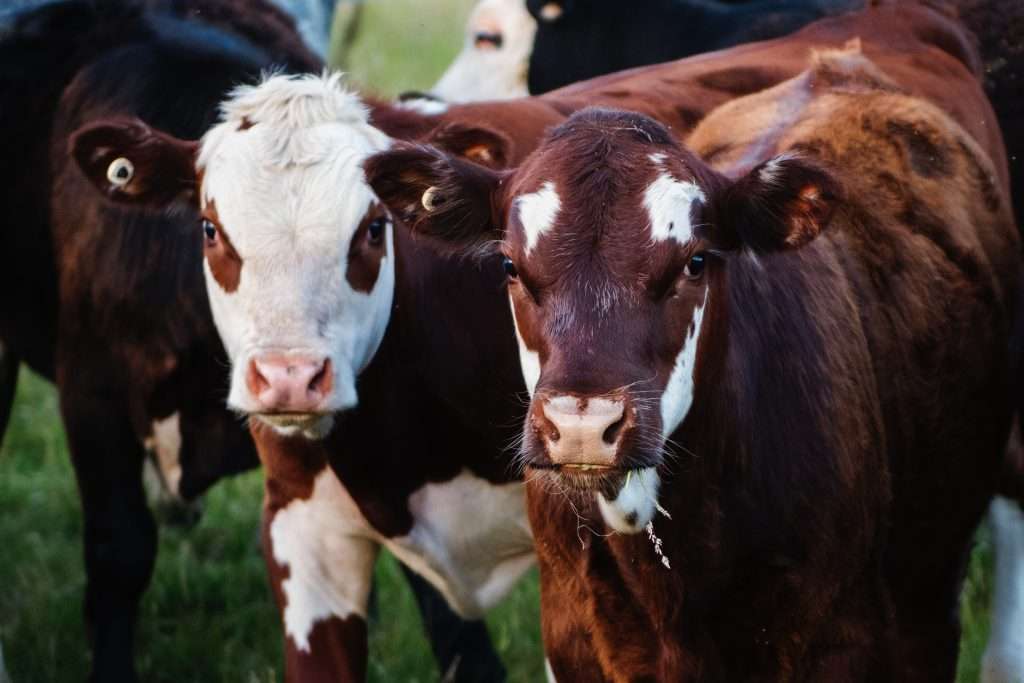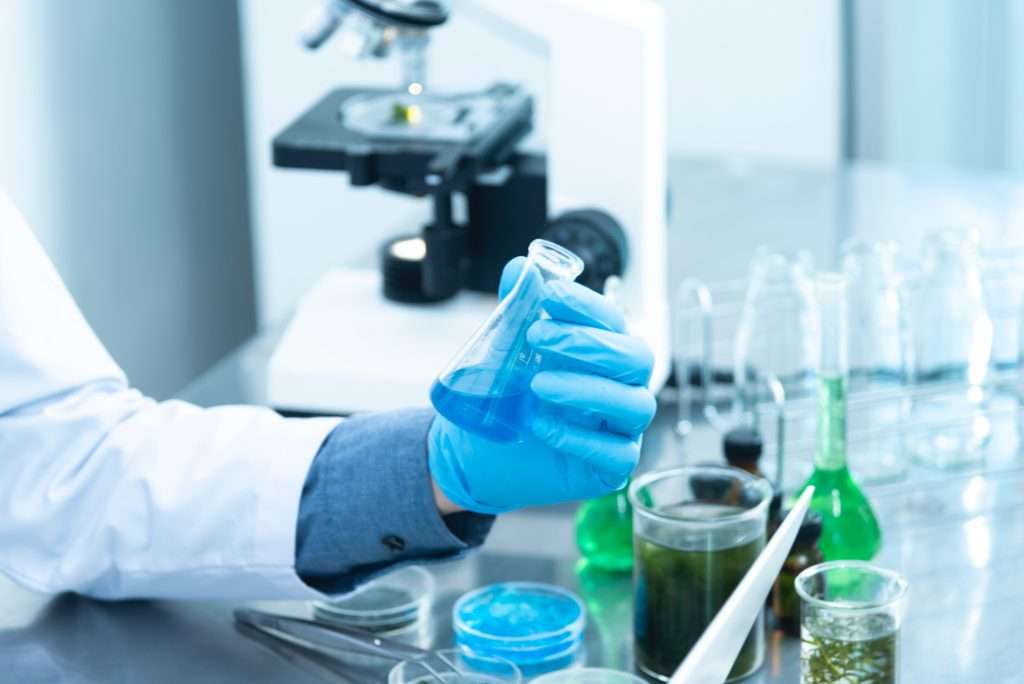Lab-Grown Meat As an Alternative
The impact animal agriculture is having on the environment is hugely detrimental. Between greenhouse gases and climate change, ocean acidification, biodiversity loss through the clearing of land, deforestation, and excessive water use, animal agriculture is one of the planet’s biggest concerns (Eisen et al, 2022). Our agricultural model is one of the most unsustainable areas in need of the most change. Companies must review ways for meat to be replaced, including lab-grown meat and plant-based meat.
Environmental, Social and Governance Investing (ESG) is one primary way that companies that are both already part of the meat and livestock industry, as well as those that aren’t, can take advantage of innovations to help mitigate their impacts on the environment. Plant-based meat and lab-grown meat is a promising investment (Morach, et al, 2021).
Measuring and creating sustainability must be done in consideration of other innovations in sustainable industries. Sustainability is a holistic project. Factors like socio-economic impacts and adherence to United Nations SDGs must be included.
What are the potential advantages of plant-based meat and lab-grown meat for ESG investment? How should companies considering plant-based meat and lab-grown meat for investment compare these innovations to other innovations in the sustainability space?

Not Just One Approach
Animal agriculture has been massively destructive, not just for the environment. It has also negatively impacted public health. Animal agriculture is plainly unsustainable (Eisen, et al, 2022). In order for companies to address climate change and support biosphere integrity, as well as public health, animal agriculture must change.
Plant-based meat is a meat alternative that is comparably easy to produce. Plant-based meat can serve to help us transition to a more bio-friendly diet. There are few barriers preventing livestock farmers from pivoting to producing plant-based meat. This is true globally. Producing plant-based meat is far easier than raising livestock. It is also more efficient, as it uses far fewer resources and requires much less land to be replaced (Werth, et al, 2021).
The same can be said for lab-grown meat, which is an emerging technology where real meat is grown in labs rather than derived from livestock. Lab-grown meat doesn’t require anywhere near as much land or water to produce.
Transitioning to a diet featuring lab-grown meat and plant-based meat will allow us to restore as much as 77% of the land cleared for animal agriculture globally (Ritchie, 2019). Currently, 50% of the world’s land is designated to agriculture. Much of this land is used to grow crops that are feed for animals on factory farms. As well as this, many of the areas cleared are critically important carbon sinks (Eisen, et al, 2022).
ESG investment in lab-grown meat and plant-based meat is a more direct way to achieve climate mitigation than even transitioning from oil and gas. Whilst oil and gas has a larger carbon footprint, around a third of anthropogenic CO2 emissions to date stem from animal agriculture (Eisen, et al, 2022). By 2050, emissions from animal agriculture will outweigh the combined emissions of three of the biggest oil and gas companies combined (Grain, 2018).
Animal agriculture also results in methane and nitrous oxide emissions, which are worse greenhouses gases than C02 (Eisen, et al, 2022). Replacing animal meats with plant-based meat and lab-grown meat can achieve half the net carbon reductions that are needed to limit warming to under 2 degrees by the end of the century. This is the case “even without any other cuts to anthropogenic CO2 emissions” (Eisen, et al, 2022).

Previous studies have not looked at the impacts of animal agriculture in a holistic way (Eisen, et al, 2022). Estimates of the impacts of animal agriculture are linked only to the ongoing effects its carbon footprint, and do not factor in land conversion and reversibility (Eisen, et al, 2022). These are hugely important – the impact of phasing out animal agriculture would be much bigger than has been previously reported (Eisen, et al, 2022).
The top five meat and dairy producers are likely to produce 80% of the allowable greenhouse gas budget within the next 30 years. These producers will create more greenhouse gas emissions than oil and gas giants Exxon, Shell & BP combined within only a few decades (Grain, 2018).
This can still be prevented. Phasing out animal agriculture would create a huge level of mitigation. Because animal agriculture produces both methane and nitrous oxide, which are worse greenhouse gases than the C02 emitted through oil and gas, the cooling effect of a phase-out would create cooling much more quickly (Eisen, et al, 2022).
Not only this, but reducing these gases would have a cooling effect for an extended time period (Eisen, et al, 2022). The negative impacts of food production, especially animal agriculture, must be mitigated by 2075 to limit warming to 1.5% (Eisen, et al, 2022). When we consider that 80% of the allowable GHG budget will be used up through animal agriculture by 2050 (Grain, 2018), replacing livestock becomes essential.

Lab-Grown Meat for Hunger Alleviation
Due to the world’s current food system, over 2 billion people currently suffer some form of malnutrition (Varela-Gutierrez, et al, 2020). Animal agriculture also creates deforestation, biodiversity loss, soil degradation and freshwater contamination in many of these places (Mateo-Sagasta, 2017). Despite taking up 77% of the worlds agricultural land for crops, animal feed and grazing, livestock only supplies meat to 17% of the global population (Roser, et al, 2019). We need a sustainable agricultural model to address UN SDGs 2 and 12 (Varela-Gutierrez, et al, 2020).
Despite these issues, foods derived from animal agriculture are increasingly consumed (Varela-Gutierrez, et al, 2020). Lab-grown meat and plant-based meat production is highly efficient, with much less land and water used (Werth, et al, 2021) (Mateo-Sagasta, 2017). This means its potential to sustainably address global hunger is massive. We must consider how to responsibly produce and consume meat, by using alternatives.
Whilst lab-grown meat requires greater technological innovation, particularly if it is to be produced in developing countries, it promises viable economic incentives globally. Plant-based meat and lab-grown meat will both benefit wealthier and developing nations alike (Morais-De Silva, et al, 2022).
Plant-based meat shows a lot of promise. Countries like Brazil are seeing increased regional demand as well as an increase in GDP. Brazil could end up supplying global food chains (Morais-De Silva, et al, 2022). Lab-grown meat has just been approved by the US FDA for human consumption, and it is currently projected to be worth 2 billion by 2035 (Meticulous Research, 2022). Comparatively, plant-based meat was worth 5.6 billion (USD) in 2021 with the expectation of rapid increase in value (Grand View Research, 2021).
What are the Incentives for Lab-Grown Meat?
Whilst there are certainly long-term economic incentives for plant-based meat and lab-grown meat, noticeable economic advantages or incentives are not apparent in the short-term outside of reduced unemployment (Varela-Ortega, et al, 2021). The transition to meat alternatives would result in relatively neutral short-term impacts (Whitton, et al, 2021). ESG investment in plant-based and lab-grown meat would result in no drastic changes to GDP in the short term (Varela-Ortega, et al, 2021). Plant-based products are more beneficial in the short term in regards to productivity and reduced unemployment (Varela-Ortega, et al, 2021).
Any rapid transition will come with economic drawbacks. Governments can assist to mitigate these short-term economic impacts. They should also incentivise the production of plant-based meat economically (Newton, 2021). Governments should provide regulatory clarity for clear paths forward (Newton, 2021). Similar can be said in regards to lab-grown meat. Balance would be achieved over the long term (Varela-Ortega, et al, 2021). Over the long term GDP would likely increase (Santo, et al, 2020). ESG adherence to these alternatives is a productive option by which companies who are global partners will benefit.
Public Health
Lab-grown meat and plant-based meat could have massive implications when it comes to public health expenditure. The cost of treating cancers that are the result of eating meats could be eliminated. Zoonotic diseases also wreak economic havoc. Transitioning away from the factory farm model could stem these costs (Springman, et al, 2016).
Eating plant-based meat could save 14 billion in healthcare expenditure a year in the US alone (McNulty, et al, 2019). In one simulation study in which society adopted a more plant-based diet, projected public healthcare expenditure decreased by 1-31 Trillion dollars by 2050 in the US alone (Springman, et al, 2016).
As well as this, we should consider the economic potential of lab-grown meat in a public health context. Specifically, lab-grown meat eliminates the risk of zoonotic diseases born out of intensive animal farming (Liebler, et al, 2009). It might also change or eliminate live animal markets such as wet markets in Asia. The potential benefit of mitigating the emergence and spread of zoonotic diseases is huge (Stel, et al, 2015). Factory farming creates the ideal conditions for zoonotic pathogens to create pandemics (Stel, et al, 2015). If factory farms were eliminated, every country in the world would benefit from increased biosecurity and decreased risk of global zoonotic pandemics.

Public Health Expenditure
Less public spending means a wealthier economy, so adopting meat alternatives is clearly appealing. Public health threats such as growing antibiotic resistance are a matter of global biosecurity (Done, et al, 2016). The conditions in which livestock live on factory farms necessitate the unscrupulous use of antibiotics.
Antibiotics have become a central part of animal agriculture, as they are used to stave off infections and disease. They are also used to promote growth through the suppression of gut bacteria (Gaskins, et al, 2002). Of the primary antibiotics used to treat humans, 70% are used in raising livestock (O’Neill, 2016) except at lower doses. This means that antibiotic resistance develops. Over 100 academic papers argue that reducing antibiotic use in agriculture is essential (O’Neill, 2016). Phasing out animal agriculture would mean and end to this issue. This is because meat alternatives do not incur these risks (Manyi-Loh, et al, 2018).
Due to growing antibiotic resistance in animals, there is the potential for pathogens to spread globally in an unrestrained way (Economou, et al, 2015). This threat is ever increasing. Aquaculture has exacerbated the risk even further (Done, et al, 2016). The public health implications are huge. A crisis could result in 10 million deaths per year by 2050 (United Nations, 2019)&(O’Neill, 2016).
There are also massive socio-economic implications regarding the amount of money that quelling a crisis could cost. The US alone already spends 20 billion a year to address first-line antibiotic resistance (O’Neill, 2016). This is projected to accumulate to the amount of 100 trillion by 2050 (O’Neill, 2016). Ending animal agriculture is the simplest and clearest way to address all of these problems simultaneously.

Conclusion
When considering meat alternatives for ESG, it becomes clear that the environmental and social benefits of these innovations are huge. First, when viewed holistically, the environmental benefits would be huge. Replacing meat with alternatives could contribute massively to global cooling. This one strategy would create positive change faster than the transition from oil and gas to renewables.
There are many incentives to do this. Trillions in healthcare can be saved, and we can address SDG’s 3 & 8. As well as this, we can free land up for greater productivity and restoration. Ending animal agriculture is a holistic move that addresses many of the UNs SDGs in fact, including ending hunger. By ending our current agricultural model we can avoid the emergence of future zoonotic diseases and address growing antibiotic resistance. No other investment opportunity has the scale of impact and such potential for holistic benefits. Plant-based meat and lab-grown meat will be vital in addressing human and ecological health. They will also be pivotal for future planetary and economic sustainability.
To learn more about how The THRIVE Project is researching, educating and advocating for a future beyond sustainability, visit our website. You can follow our informative blog and podcast series, as well as find out about our regular live webinars featuring expert guests in the field. Sign up to our newsletter for regular updates.























